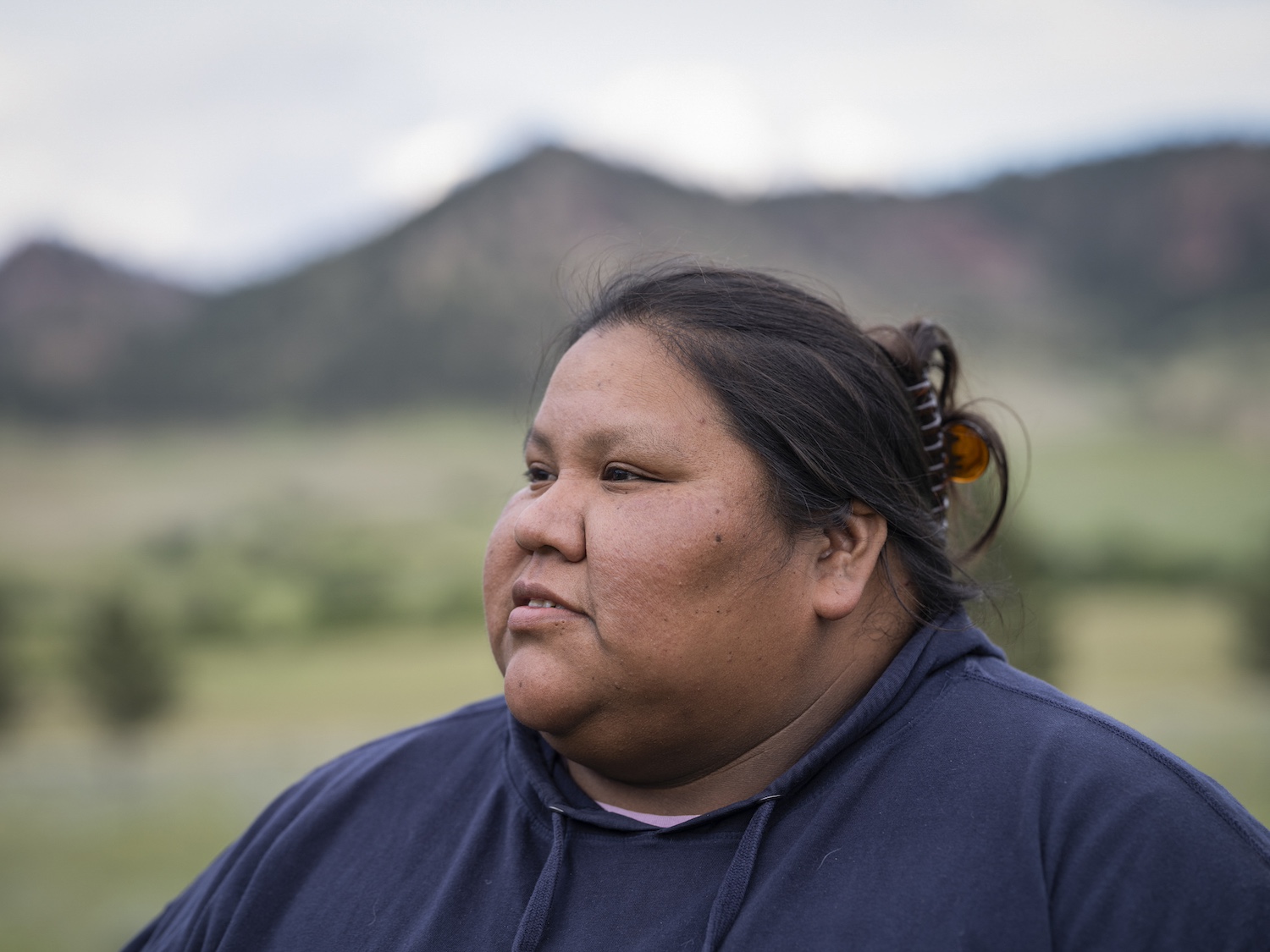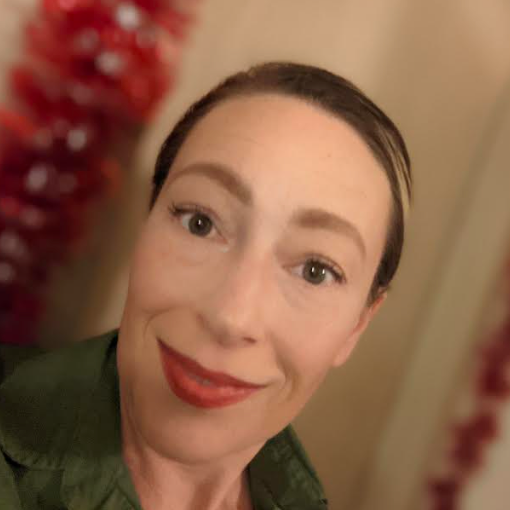
Donica Brady and her daughter on the Northern Cheyenne Indian Reservation, where Brady educates her neighbors about solar energy. (Image: Nina Robinson)
At the end of 2024, Dream.Org launched the Make It Real photojournalism series to highlight the challenges and triumphs of those fighting for a more sustainable and equitable future in the United States. We're collaborating on a series of TriplePundit articles to share these stories. This is one of several features centered on the climate leaders empowering Native communities to reclaim energy sovereignty while building resilience.
Donica Brady recalls being caught off guard when Dream.Org featured her as a climate leader in its Make it Real photojournalism campaign. She understands that what Indigenized Energy is doing is big, but she sees her own work in smaller increments: one person, one project and one win at a time. “I'm just doing what I was taught and trying to help people,” she said.
Indigenized Energy is an Indigenous-led organization focused on bringing energy sovereignty and independence to tribal nations through renewable energy. Brady’s first role as a solar program associate put her at the forefront of educating her community on the Northern Cheyenne Indian Reservation in present-day Montana about solar. She visited her neighbors’ homes to explain how solar works and the benefits of having solar panels installed at their homes. Instead of hard sales tactics, she provided information and support — guiding those who chose to have a solar array installed through the application process. The work positioned her as a leader for a just and equitable energy transition, helping to ensure her community won’t be left behind. She’s since been promoted to senior program associate to share what she learned by training others to do the same on their reservations.
Being a member of the Northern Cheyenne Indian Reservation an important part of Brady’s success and the success of the solar program there. It’s equally important that new solar program associates belong to the same tribes they’ll be working with — “they know their ways,” she said.
“If I were to go on a different reservation, and I know what I know, but they know what they know, there's going to be a clash,” Brady explained. “I might believe something that they don't, and vice versa. I think it's really good that there's going to be solar program associates doing what I was doing, but on their reservations, because that connection is needed.”

Brady says she’s asked who her parents and grandparents are each time she visits someone to talk about solar, which inevitably leads to familiarity and makes conversations more casual. “They knew the people that I came from,” she said. “That was pretty cool … It helped a lot.” She finds fulfillment in equipping those who came before her with renewable energy — the grandmas and grandpas — knowing that the panels will last to help those who come after her as well.
Cody Two Bears, the founder and CEO of Indigenized Energy, refers to the energy sovereignty afforded by solar as a pillar for the next seven generations — a principle of sustainability commonly adhered to by many tribal nations and, in one form or another, by Indigenous people across the planet.
“We're taught to think about the generations that are coming ahead of us,” Brady said. “It's not about us, it's about the people who come after us.”
Centering patience and respect
Most of the people Brady meets with for solar evaluations and applications are Elders, which informs how she relates to them. “Everything that I do, it was taught to me,” she said, referring to her upbringing. “Especially when you're working with our Elders, there's a certain way that you approach them, there's a certain way that you speak to them … and the majority of it revolves around respect.”
For older generations who have already had to adapt to immense technological change, Brady often spends hours going over the details. Sometimes that means breaking down the same thing in multiple ways because everyone learns and understands things differently, Brady said. She also walks applicants through the paperwork step by step.
“There was a time when I didn't know how to use a spoon. There was a time when I didn't know how to read,” she said, alluding to how life comes full circle. “I try to have that kind of patience with the people I'm working with because someone was graceful enough with me when I was learning.”
Coaching contractors
Brady also coaches third-party contractors who survey sites on the reservation to prepare for solar installations on how they should interact with people, and especially Elders, to show proper respect. This includes shaking hands and accepting what is offered, whether it’s coffee, water or something to eat.
She makes it a point to be present during these surveys, serving as a buffer and ensuring everyone is comfortable. Just as outsiders often harbor harmful stereotypes about Indigenous people, she noted that those on the reservation can be skeptical of unfamiliar faces.
“We're always gonna have naysayers. We're always gonna have people who are gonna argue against it,” Brady said. “And that's fine, everyone's entitled to their opinion.”
She described those naysayers as falling into two camps: those who learn of the program through word of mouth and may not fully understand what it’s meant to do, and those who are concerned about the environmental and human rights impacts of the mining that supplies the lithium used in batteries for storing solar power.
The little wins are huge
“I think every little win is a big win,” Brady said when asked about her biggest accomplishments in solar. “There were times when I was trying to get a hold of people, and I'd be trying for weeks on end, and then I would finally get a response. I mean, that's a huge win.”
Anytime she gets a signature for a new solar project or hears about someone new taking solar training, she counts it as a win.
“You have to be able to take the small wins to help … carry you until the big win comes,” Brady said. “If you're constantly worrying about the end goal, you're going to get down about it, you're going to get discouraged. As long as you take it in stride and be excited even about the little things, the adventure itself is going to be great.”

Riya Anne Polcastro is an author, photographer and adventurer based out of Baja California Sur, México. She enjoys writing just about anything, from gritty fiction to business and environmental issues. She is especially interested in how sustainability can be harnessed to encourage economic and environmental equity between the Global South and North. One day she hopes to travel the world with nothing but a backpack and her trusty laptop.














